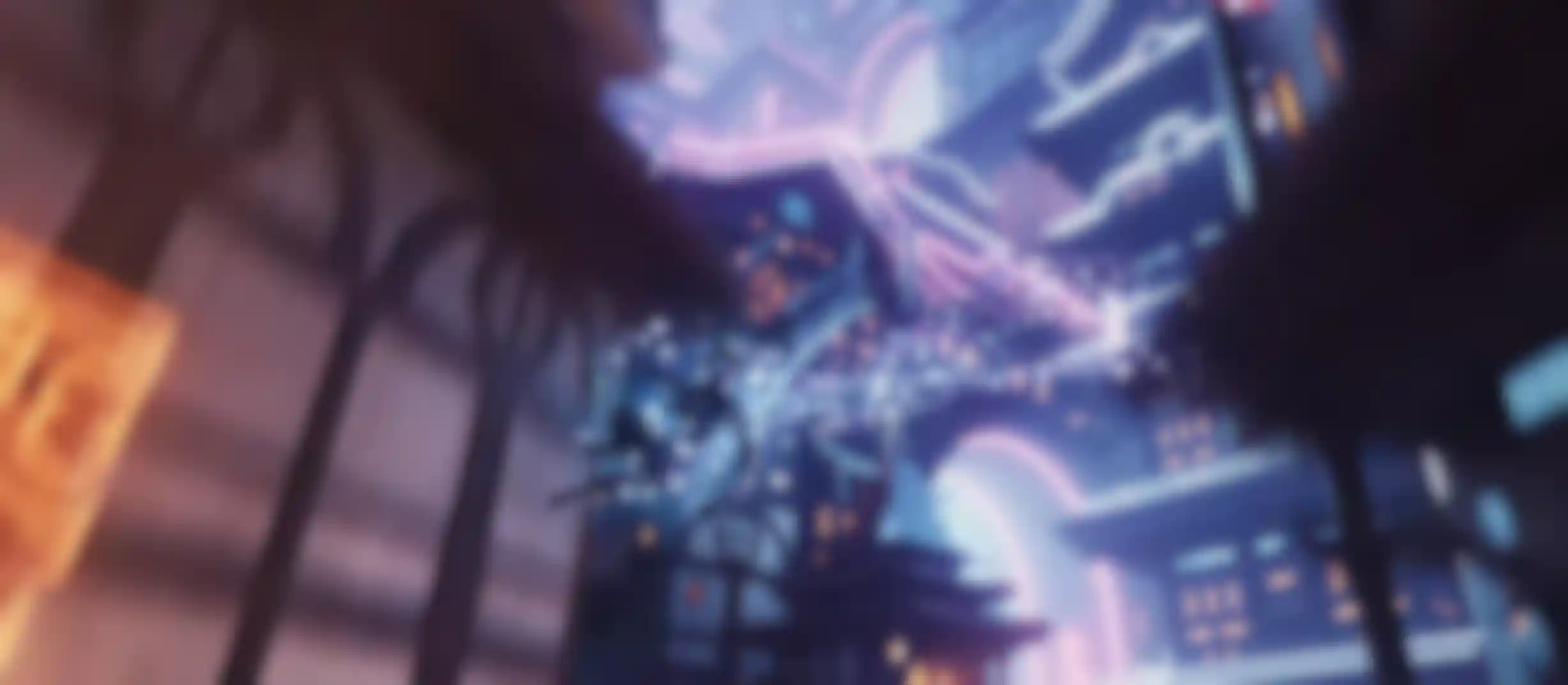
Creating Game Trailers With Maxon One Unit Motion Design explains their process for creating an epic ‘Magic: The Gathering’ trailer with a cyberpunk aesthetic.
“Magic: The Gathering” (MTG), a wildly popular trading card game published by Wizards of the Coast, has been around since 1993 and is enhanced regularly with expansion sets, including “Kamigawa: Neon Dynasty.”
Released last year, the expansion was quickly dubbed one of the best in recent memory and it remains popular with dedicated fans. We reached out to Unit Motion Design — a studio known for their stunning CG game trailers and teasers — to talk about one of their favorite trailers they’ve created for the game so far.
Here’s what Creative Director and Co-Founder François-Côme du Boistesselin had to say about the studio’s creative process and use of Cinema 4D, Redshift, ZBrush, Houdini and many other tools.
Tell us about Unit Motion Design.
du Boistesselin: Having previously worked as a freelance motion designer for Unit Image, another company specializing in CG trailers, I realized there was a demand for dedicated motion design CG trailers. Our studio was formed about six years ago, and that has been our primary focus along with opening titles and FUI for movies.

Talk about why you enjoy making CG trailers for games, and what it takes for them to be successful with fans.
du Boistesselin: What's really great about game trailers is that you get a different universe and story for each project and we're often lucky enough to come across some very cool subjects, like “Kamigawa,” where we're in a colorful Japanese, cyberpunk universe.
It's also often very demanding because we have to sublimate all the artistic work done by the game studio over several years to make the player want to play the game, so we work closely with the studios' creative teams. It's a hyper-creative, ultra-stimulating environment and a childhood dream for me!
How did your relationship with Wizards of the Coast begin?
du Boistesselin: Our first collaboration began with the intention of creating a teaser video for the MTG “Kaldheim” expansion. For the teaser, they requested something like “The Crown's” opening titles, where a melted-gold effect is used to build the crown itself, and they wanted to apply the same approach to a sword.
Our proposal went beyond just depicting the formation of the sword, we also suggested adding engraved characters on the back of the tree and several other elements. They loved the idea, especially because it resembled a statue and had a comic book visual style that closely matched their cards.
That approach differed from our typical CG trailers, which are typically more action oriented. Now, when we work for MTG, we create several videos for each project, including a teaser and a trailer. The teaser is not just a trailer breakdown; it includes new content, different shots and charts.
How do you come up with the aesthetics for these trailers?
du Boistesselin: The aesthetics are derived from the world guide provided by MTG. Their comprehensive world guide includes about 250 pages of concept art, lore and details about the game’s world. For instance, in “Kamigawa: Neon Dynasty,” the red faction represented humans, the blue faction was akin to cyber ninjas, the green faction was tied to nature and the black faction resembled Yakuza living on the city streets.

Each expansion introduces specific hero characters, and they highlight some of them because they become iconic for that expansion. We recreate these characters in our work. The huts and the motorbike represent the city's lower levels. The Yakuza-inspired character has a corresponding card in the game, and if you find it, you'll see that the card design resembles the rat and the motorbike. We drew inspiration from that card more than a reference from a film.
Talk about the clever transition where the glitch city resembles a motherboard.
du Boistesselin: The city was high level, and the closer one was to the ground, the more distinct they were. So, the setting was a Zen Garden with a bonsai, initially, and then glitches occur as reality changes. We used the metaphor of a motherboard and showcased the transformation from the garden to the city. There was a colossal bonsai atop the enormous city, and everything grew around it.
The whole transformation was tied to the lore of the world and the glitch was an integral part of the game's narrative, so we chose to follow it throughout the film, as it was the only animated element.
Say more about the transformation process.
du Boistesselin: The transformation between the garden and the city required a complex Mograph setup. Since we needed to build many different buildings, we decided on a modular approach that included creating a variety of rooftops and multiple building levels.
We used a cloner and effectors to construct the buildings out of separate parts. The system allowed us to create dozens of buildings with different designs, heights, levels and more by simply adjusting the effector values.


The MoGraph setup for the garden was basic, involving a effector with a field object driven by noise to control the ground's dissolving effect. We prototyped it quickly, and most of the work was done in C4D. Houdini helped us to control some specific visualization aspects but, overall, it was a straightforward process using MoGraph and blending noise fields.

What is your typical pipeline for creating CG trailers?
du Boistesselin: With a team of about 19, we begin by creating concept art, and sketches and then move on to modeling each element. The bonsai model for example, was created from scratch using Houdini. We carefully modeled twisted trunk shapes based on the specific look we were going for. Next, we exported the tree into C4D for texturing and inclusion in the animated world.
The cloud sequence was also created in Houdini with Redshift textures and exported to C4D as an RS Proxy. This helped us maintain the same VFX aspects in C4D, avoiding the need to rebuild from scratch.


Overall, this workflow allowed us to seamlessly transition between Houdini and C4D, ensuring a cohesive and efficient process for the project. All of the characters were created with ZBrush, from the rats to the wanderer character and even the flowers.
What do you enjoy most about creating game trailers, and do you have any advice for others who would like to make them?
du Boistesselin: If I have one piece of advice, it's to be patient. You don't start your career by making the latest trailer for video game blockbusters. I started working on this type of project after 15 years of professional experience, and not necessarily on such cool subjects.
Above all, I became a motion designer and then I wanted to know how to apply my know-how on game trailers. Of course I'm basically a gamer, but I acquired my way of producing game trailers through the hundreds of projects that I carried out over the years that were as much broadcast design as advertisements for beauty products or insurance companies.